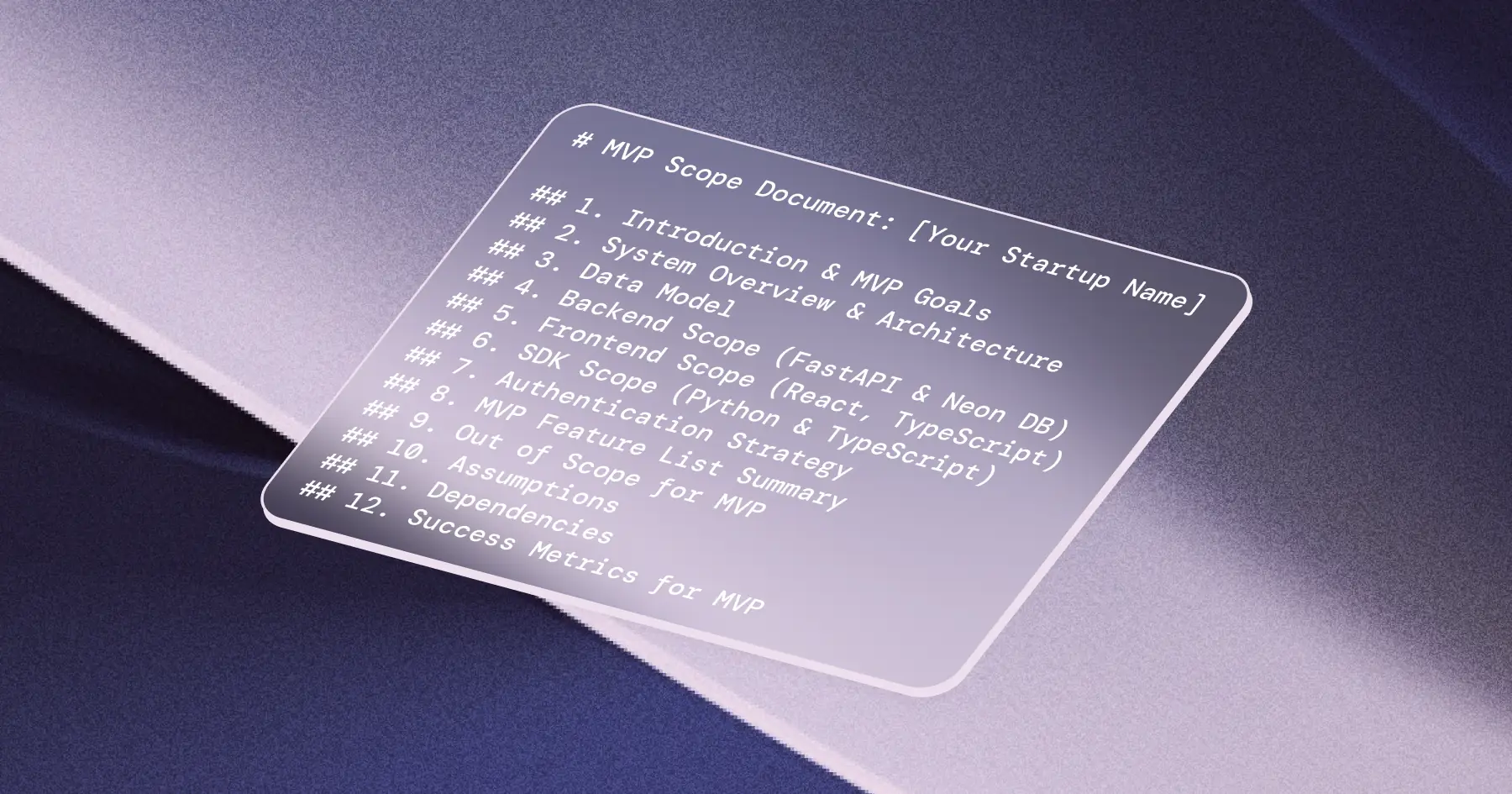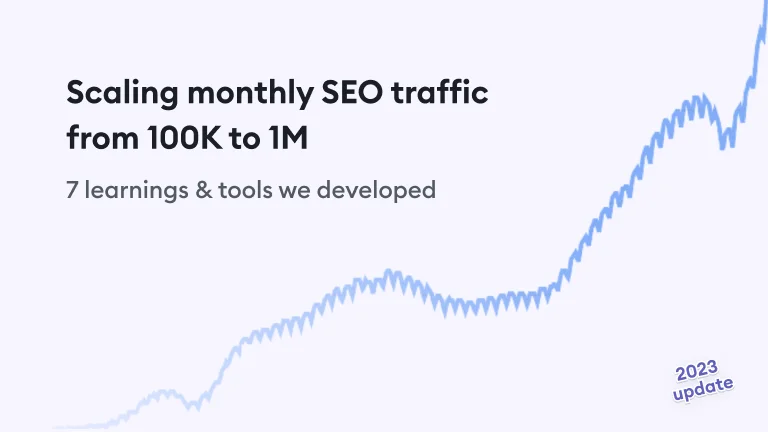
When looking for legendary SEO success stories on the internet, it doesn’t get much better than this:
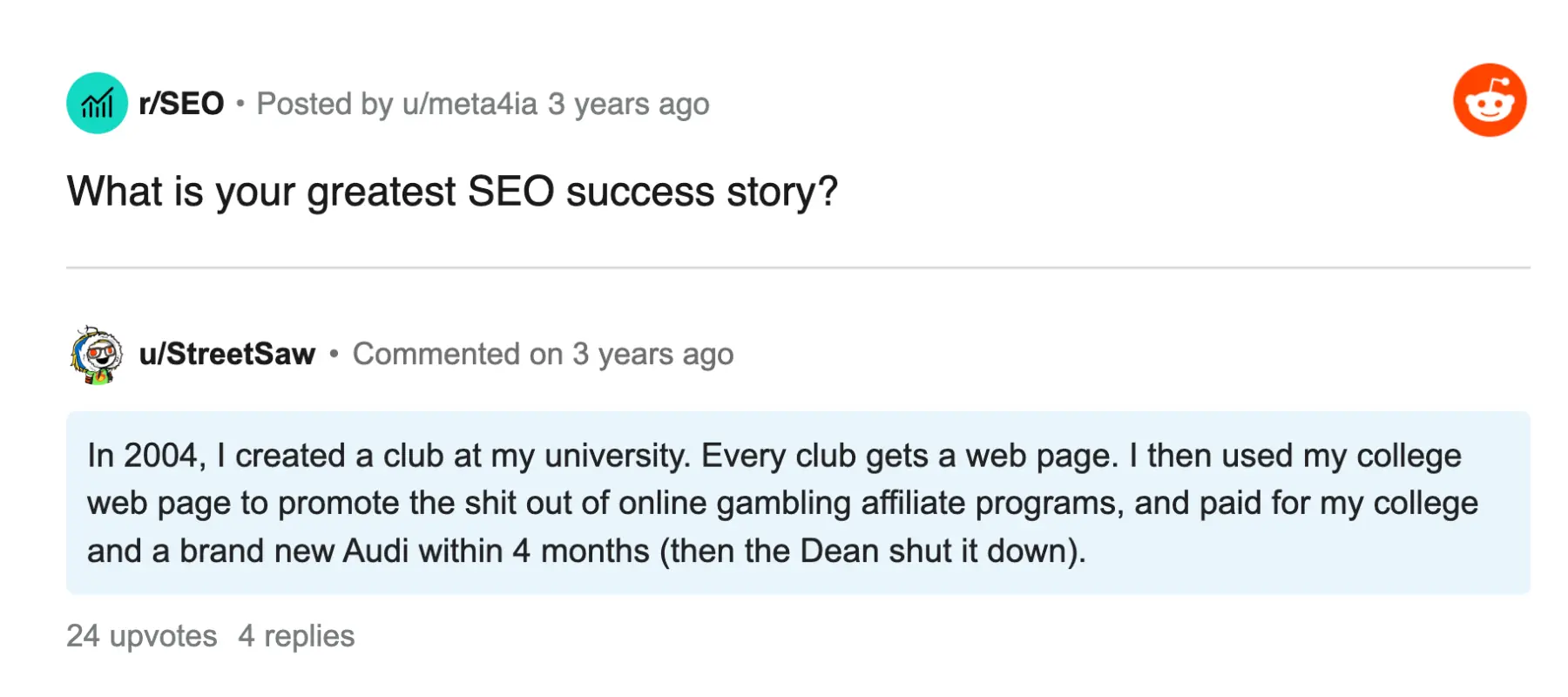
How could you top that?
Brad Smith and Codeless took monday.com from 100K to 1M in 12 months (and since then way further).
Ben Goodey has displayed some of the wildest SEO success stories on his podcast, like how Peanut App grew 0 to 2.3M in 12 months.
And there are probably countless others (share yours with us on Twitter!) we don’t know of.
Anyhow, here’s our addition to the thread on “what is your greatest SEO success story?” with the following stats:
- We grew our organic search traffic from 100,000 in September 2021 to over 1,000,000 in January 2023
- Since our founding in September 2020, SEO has accounted for more than 50% of our 100k waitlist/product signups
- At any given time, we’ve had a 1-person acquisition team (first everything was done by our co-founder/web design master/CEO Aaro, then first marketing hire Samuli, then his successor Saku)
- Samuli hit big on content and found a strategy that first took us from 0 to 100K in 6 months (more on how and what we did here) and has continued to work ever since
The results have been great, and the past 2 years have provided us with valuable insights we would like to share with the community, especially other early-stage startups that want to remain cost-efficient with their acquisition.
In this post, we will share our content production tool stack and 7 learnings from our journey thus far.
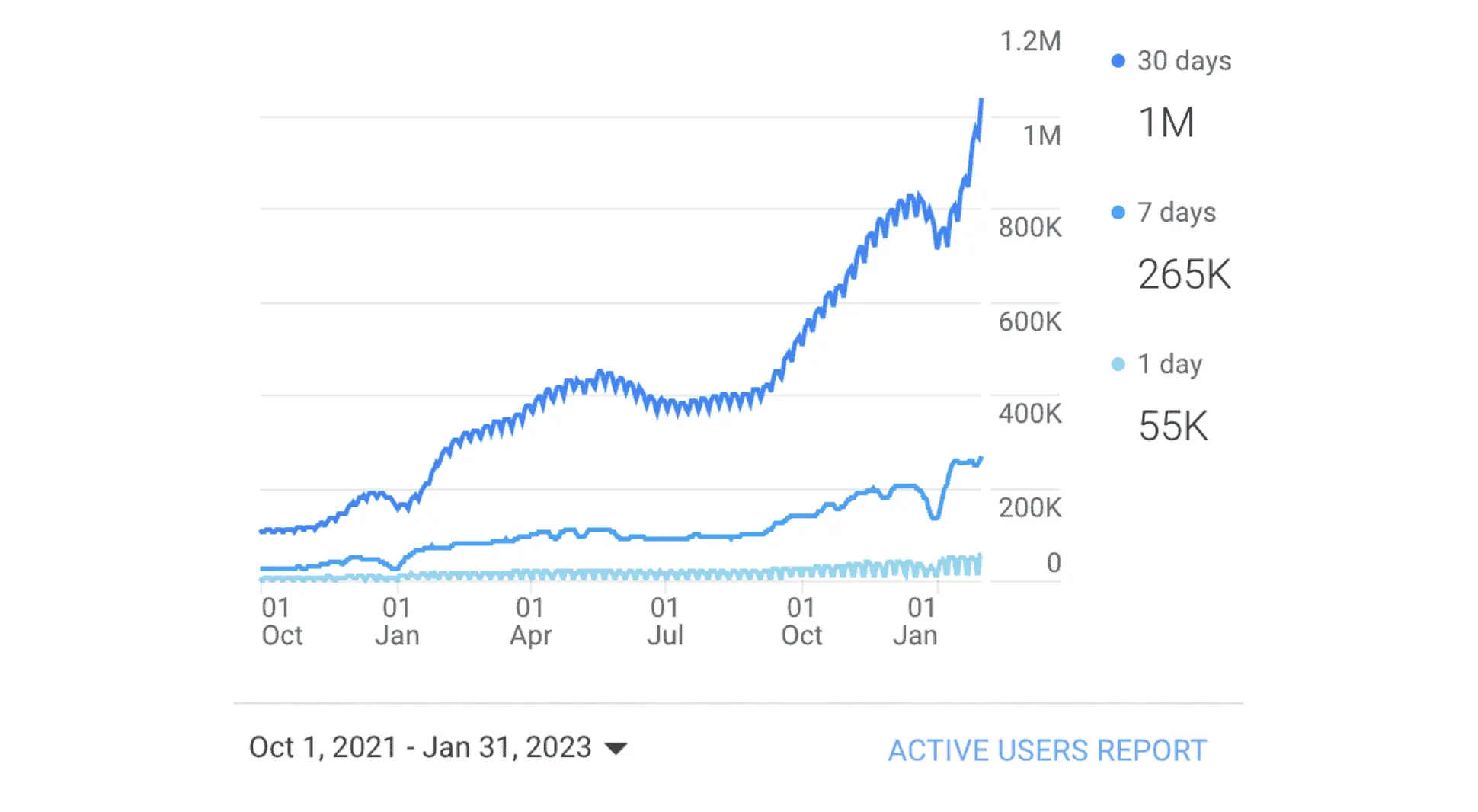

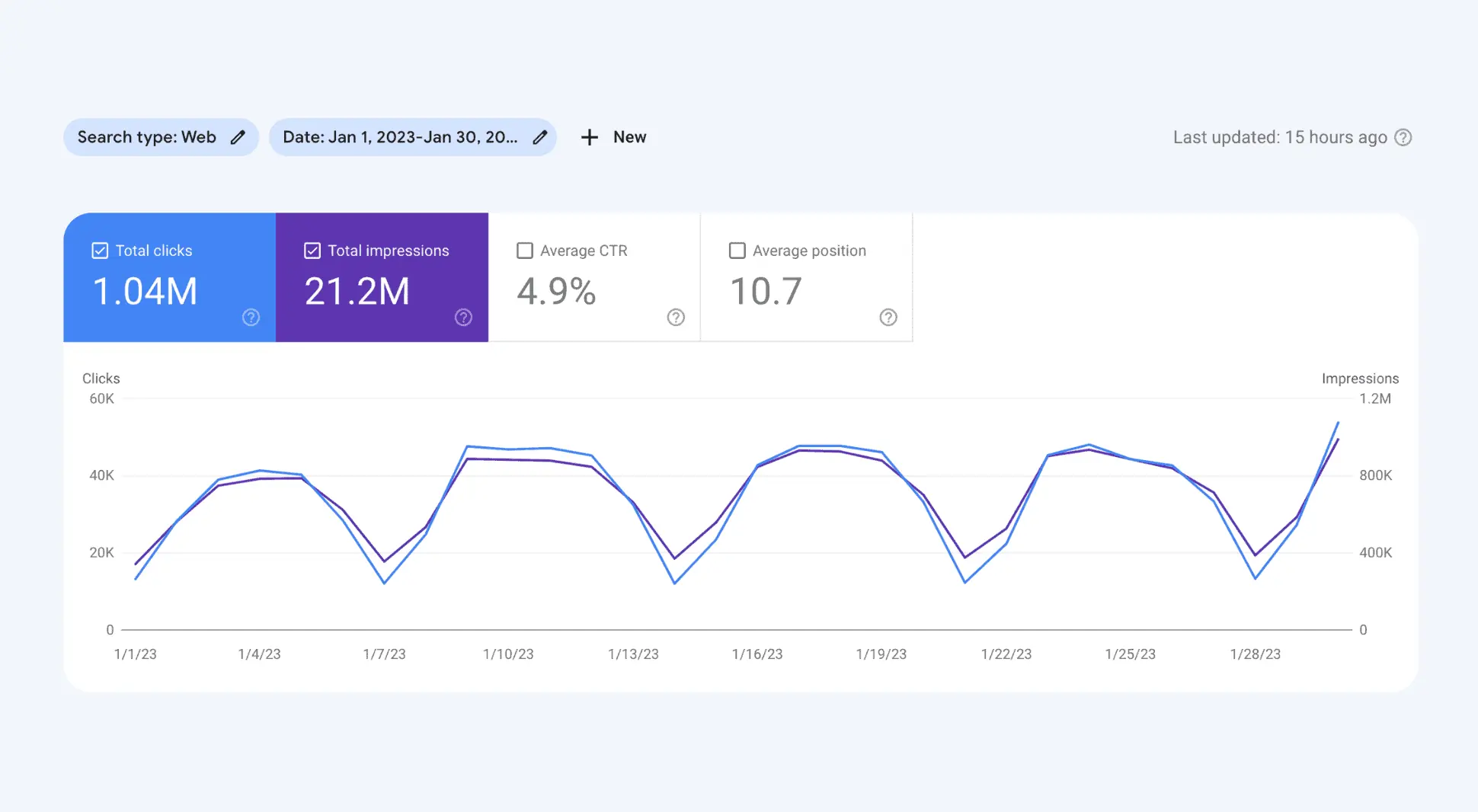

The point of this post is to help other startups learn from our work and hopefully find out better ways to do SEO.
By sharing how we do things, others can hopefully help us. So send us all feedback, ideas, and tips you might have for us.
7 content marketing takeaways
Here are 7 key learnings from the past 2 years:
- Invest in finding great writers
- Optimize your content brief-making process for writers
- Don’t cut corners with SEO “grunt-work”
- Find how to add value to the reader
- Invest in your website experience, internal linking, and updating content
- You can do a lot with a small team and intense focus
- You need buy-in from your whole team to win
1. Invest in finding great writers

If you are not going to write in-house, do the work of finding good writers. This will help you:
- Separate your text quality from the competition
- Save a lot of headache and time (=money) editing text
- Avoid inconsistencies in your publishing schedule
Although we're an AI startup, we have never used AI to generate any type of content on our blog. If you want to find great writers who aren't going to sell you copy-pasted or AI-generated text, you should:
- Pay a fair price to the writer
- Optimize processes (more in the next takeaway)
- Be open and transparent with communication
- Give them some time to learn and provide feedback (“do more of this”, “do less of that” etc.)
There is a good reason why around 80% of our posts have been written by Lawrie Jones from 42Group (he’s amazing).
2. Optimize your content brief-making process for writers

The content brief is perhaps the most important part of your content marketing operations. There you will give your writer all the necessary industry/domain knowledge and provide a clear structure on how and what they should write.
We have iterated and optimized this process for our needs, to make working with us as easy as possible for our writers, by asking them questions like:
- How can we make your writing task easier?
- How do you like to work?
- What kind of briefs are the best to write?
This has then allowed us to find win-win solutions, where we can establish long-term relationships with writers who want to work with us and can consistently provide us with high-quality output.
3. Don’t cut corners with SEO grunt work

We can't tell you how to exactly succeed with SEO, but we are certain that doing the boring and basic work really well will make a huge difference. So double down on the basics and do the "grunt work" yourself:
- Keyword research
- Editing text
- Content updates and rewriting
- Internal linking and constant updating (use “site:[yourdomain.x]” to find opportunities on Google)
Our hunch is that in order to succeed with SEO, you should get really good with the basics yourself before you think of outsourcing this step to a writer, freelancer, or an agency.
Internal linking has had a surprisingly positive impact on getting posts to rank faster and higher. You can also get creative and visual with internal links, here's an example of how we do it:
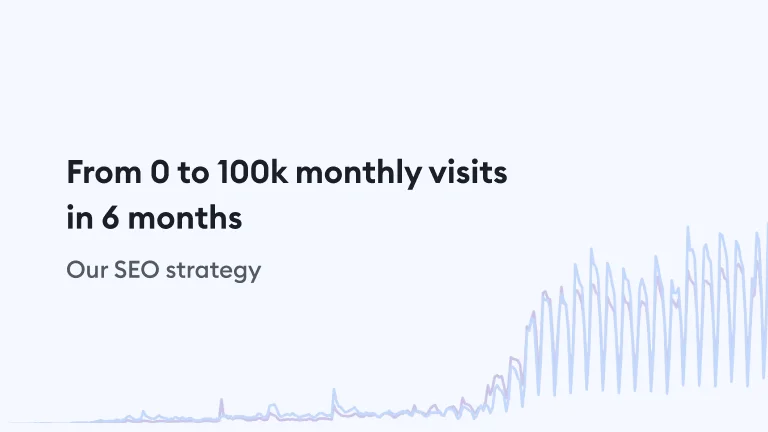
SEO content strategy that took us from 0 to 100k monthly visits in 6 months
Learn the SEO content strategy that focuses on solving customer pain points and spurred our growth to +25,000 signups.
4. Add value to the reader
You can use keyword data to find ways to help your audience solve their problems.
For us, for example, we found out that with any topic revolving around "how to write X email", there is plenty of search volume for different email X email examples, samples, and templates.
This led us to create these handy samples that are a staple of our blog posts, driving plenty of additional traffic, because they help the reader:
Hi (Recipient's name),
This is an email sample we use in our blog posts. Our biggest blog post (so far) has 49 email samples!
Hope you like these at least half as much as we do.
Best, (Your name)
Be creative about it but also try to do it in a way that enhances SEO performance, like our samples and templates for example.
5. Invest in your website experience

Website speed and ease of use are some of the key elements of SEO success. We’ve invested heavily in page speed optimization as well as user experience on the Flowrite blog.
Ultimately, clicks don't mean anything and we've been intent on driving conversions since the beginning. SEO is useless if you cannot acquire users, right?
6. You can do a lot with a small team and intense focus
We have first-hand experience of how much one can get done by just putting their head down and doing the work. Consistency and patience are important to SEO. Our advice is that you must focus on it intensely for at least a while (maybe 6 months) to see results.
Try to hone and optimize your processes as much as you can and try to relentlessly narrow down your scope to find the few essential things that move the needle for you. Focus and ruthless prioritization will help you become more efficient in the long term, which can speed up results.
This, of course, doesn't make it any easier. One thing that does, however, is if you invest the time to find great writers. This can greatly reduce the time you spend per post (for us the difference is spending over 7h per post vs. under 2h per post) which will speed up content production and experimentation, and consequently potential results.
7. You need buy-in from the whole team to win
SEO won’t drive results immediately, and you should be transparent about it with everyone. One thing that has helped us is sharing progress with our team as well as investors.
One helpful thing we've done is mentioning SEO news, progress, and experiments (both successful and failed) in our monthly investor updates. This has led to some of our investors talking about our progress and success to other investors and portfolio companies (and sharing on socials).
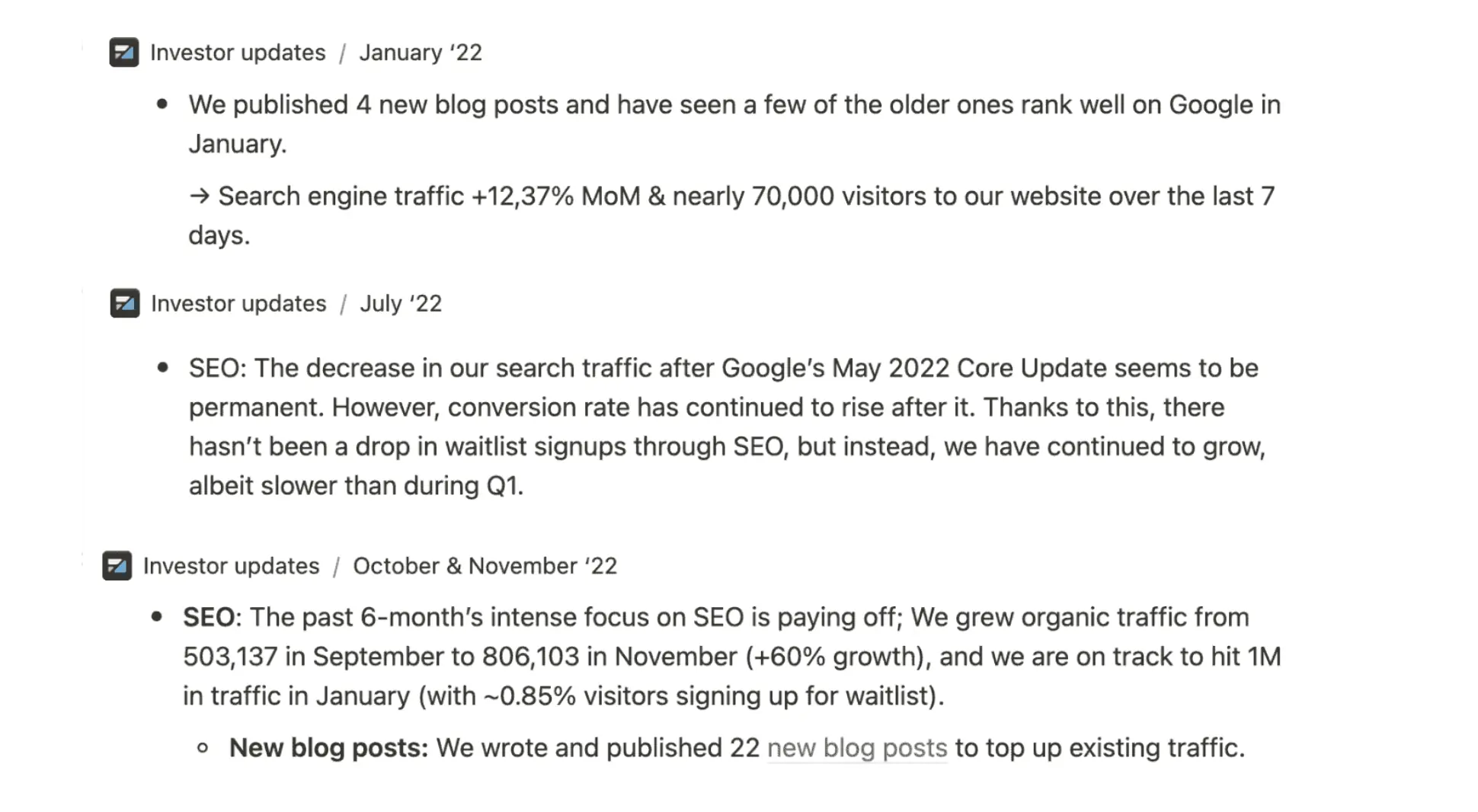

Content marketing tools we used to scale SEO

We firmly believe that companies/teams/people should not be afraid of doing plenty of “things that don't scale" before being able to build processes that scale. This is often the case with SEO.
Our content production processes are constantly evolving and we iterate our tools all the time. We started with a focus on creating the best content out there and we knew we could differentiate ourselves by doing all the basics better than the competition.
This meant putting more effort into keyword research (going through thousands of keywords on Semrush per post), competitor analysis, website optimization, and experimentation than everyone else.
This work has paved the way for us to create tools, templates, and processes that have allowed us to double our capacity from around 5 posts per month to over 10 per month while reducing the amount of time we spend on SEO by over 50%.
These 3 tools make the backbone of our current content marketing operations. We use Notion for almost everything, to automate all possible manual steps and save time:
- Content dashboard + schedule
- Notion to Webflow automation using Make
- Content brief
1. Content dashboard + schedule
This is where we keep track of our content in the pipeline. It’s the central place for all ideas, briefs in progress and writing, articles that are ready to be edited or published, and all posts that have already been published, who wrote them, what kind of brief was used, and so on.
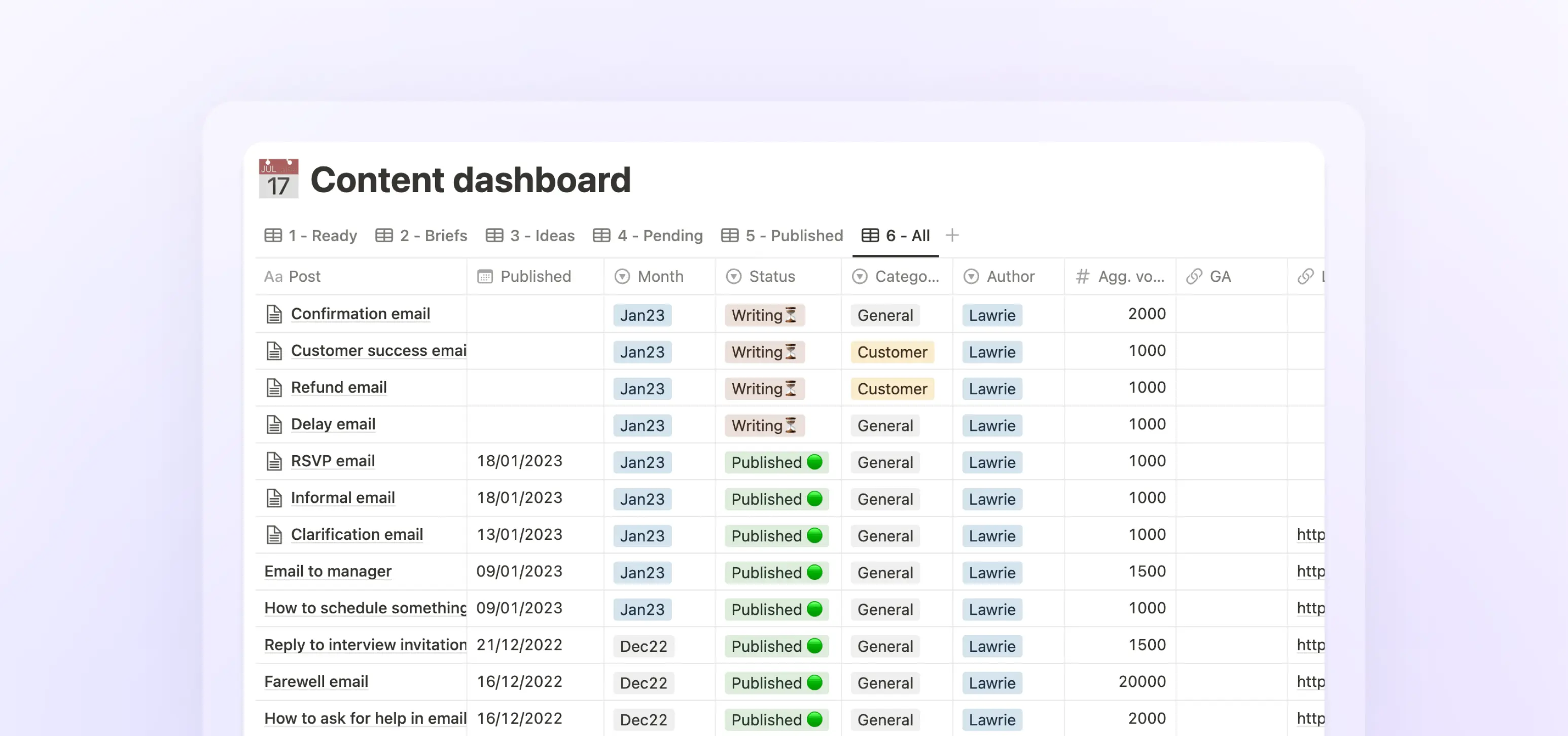
We started out using Google Sheets but have since moved to Notion because it allows for better collaboration, removes unnecessary manual steps, is faster to use, and has better automation capabilities with Webflow (our CMS) and Make (our integrations/automation tool) for our needs.

2. Notion to Webflow automation using Make
To speed up publishing blog posts, we use a handy Make automation that checks our Notion Content dashboard every morning for new posts ready to be edited. If it finds new posts, it uploads them to Webflow and sends me a notification on Slack that it’s time to review and publish a new blog post.
Here's a simplified rundown of the steps to make the automation:
First, connect Make with Notion and create a new automation. Link your Content dashboard database with Make through “Database ID” and set filters to only look for posts ready to be published (create a Notion property such as "Status").
Then, you need a task that creates a new post on Webflow and pushes data from Notion properties to Webflow fields in your Blog post CMS collection. Then you can set a notification (we use Slack) so you know when to go edit and publish posts.
Finally, set a timer to check the database for new posts ready to be published, and use a frequency of your liking (I prefer once a day).
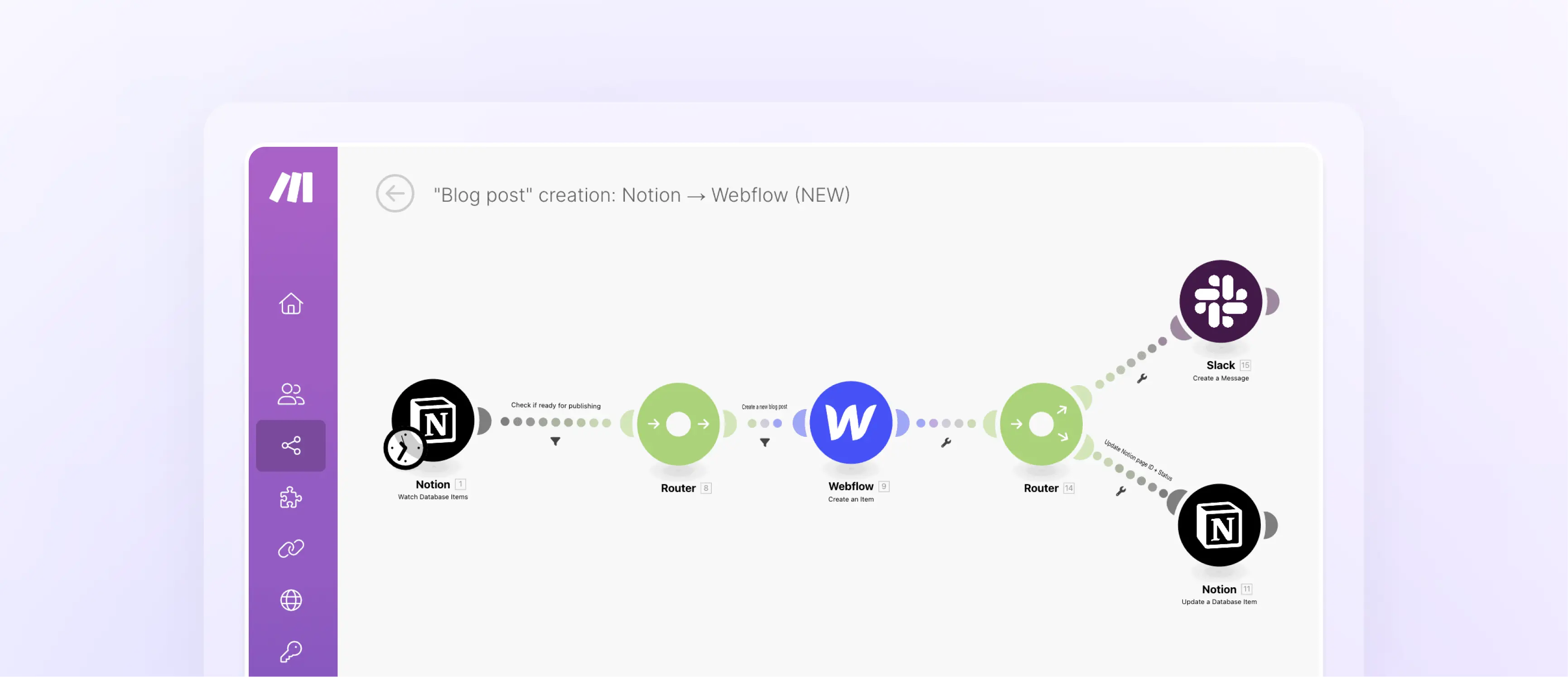
If you use WordPress as your blog, you should try Wordable and if you know of better ways to optimize our processes, let us know!
Get our tool stack and video explanations for using them by sharing this post on Twitter or LinkedIn. Once shared, send us an email here with a link to your post (we will go like it 💜) and we will send you our Content dashboard Notion and Google Sheets templates as well as step-by-step instructions on how we made our Make automation.
3. Content brief
The content and structure of your briefs are heavily dependent on your company’s niche, type of product, and topic of the post itself. There are, however,some best practices and things that we’ve found effective.
There are 2 essential steps to making a content brief. How you should do them might differ, but here are the essentials of what we do:
1. Keywords
We always target more than one keyword per post, the amount depending on the broader topic and the competition for those keywords. Our best advice is to go through a lot of keywords related to that topic and figure out a way to group them effectively.
We usually start with a list of 150-750 relevant keywords on a singular post topic and narrow it down to our subheadings by grouping each keyword with a smaller topic inside the topic.
For example, if working on a “how to ask for feedback” post, we would group all keywords containing “sample” into one group, and then again separate all different types of samples inside that group into different groups like “interview feedback sample” (and all its variations), “customer feedback email sample” (and all its variations) and so on.
At the end we have a manageable list of grouped keywords, that will be used to create the structure of the blog post, like this:
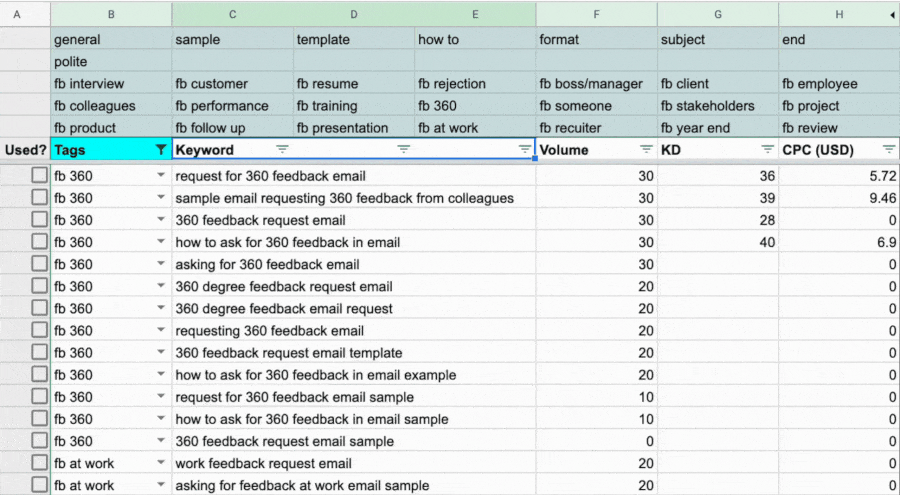

2. Structure
Create a clear structure based on those keywords and include keywords to be used under each subheading. To make the writer’s job easier and faster, we prefer to do all the SEO-related stuff ourselves.
You can add extra information, links for inspiration, instructions, and anything else that could help the writer write better paragraphs. Make sure to ask your writers how to make their job easier and try to learn how they do research, to complement their approach with your domain expertise.
There are great resources available online to help you create better content briefs. I think, however, that the most underrated thing you can do to improve your briefs, is asking your writers for examples of good briefs they've been given before, as well as try new and different ways to make their job easier.
End credits
Our success was pioneered by Samuli (Twitter and LinkedIn), who is incredibly knowledgeable about startups and content marketing. Last summer he moved on from Flowrite to found a company, leaving a legacy of SEO performance that's still churning results.
Last but not least, a huge thank you to all the freelancer writers we’ve worked with. Especially Lawrie Jones (from the amazing 42Group), who has written over 60 blog posts with us!
If you’re interested in learning more, read about our strategy and the tactical side of things in this blog post.

